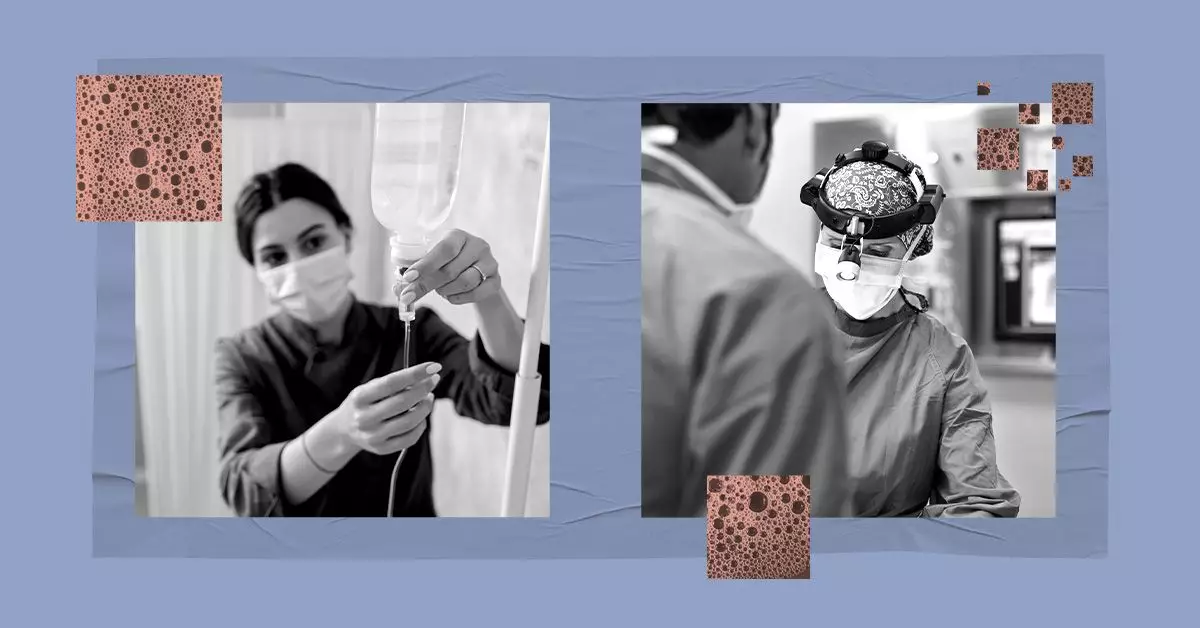Ewing sarcoma, a rare and aggressive form of cancer, predominantly affects the bones and surrounding soft tissues, making it a significant concern for children, adolescents, and young adults. This disease is characterized by a unique cellular composition and a propensity for rapid progression. Given its rarity and complexity, an effective treatment strategy necessitates a collaborative, multidisciplinary approach.
Ewing sarcoma arises from primitive neuroectodermal cells and can manifest in various forms, often originating in the pelvis, legs, or arms. The aggressiveness of this type of cancer, coupled with its preference for young populations, underscores the critical need for early detection and timely intervention. Patients diagnosed with this condition may often present not only with local symptoms but also systemic signs if the cancer has metastasized.
The treatment landscape for Ewing sarcoma is multifaceted, encompassing various modalities aimed at combating the disease from multiple angles. This approach typically includes chemotherapy, surgery, radiation therapy, and, in some cases, stem cell transplantation.
**Chemotherapy** is frequently the cornerstone of Ewing sarcoma treatment. Administering a combination of powerful drugs targeting both the primary tumor and potential microscopic metastases is crucial for improving patient outcomes. Conventional regimens may include drugs like vincristine, doxorubicin, and cyclophosphamide. Delivering this treatment in cycles allows healthcare teams to monitor the patient’s response and manage side effects effectively.
**Surgical intervention** plays a key role when feasible. Surgeons aim not only to excise the visible tumor but also to maintain as much function as possible in the affected limb or area. Whenever possible, limb-sparing techniques are favored to ensure a better quality of life post-operatively. The decision-making process regarding surgery involves numerous factors, including tumor size, location, and the response to initial chemotherapy.
**Radiation therapy** is another essential component of treatment, often integrated with other therapeutic modalities. It serves to target cancer cells that remain after surgery or when surgery is not a viable option. Such targeted intervention is vital in addressing both localized disease and areas where the cancer might have spread.
Understanding the distinction between localized and metastatic Ewing sarcoma is essential for tailoring treatment strategies effectively. Localized Ewing sarcoma refers to the cancer confined to the primary site, while metastatic Ewing sarcoma indicates the spread to distant organs, such as the lungs or other bones.
For **localized Ewing sarcoma**, the standard treatment approach typically begins with chemotherapy to reduce tumor size, followed by surgery, and potentially accompanied by radiation therapy to rid the body of any residual cancer. Conversely, for **metastatic Ewing sarcoma**, systemic treatments, primarily chemotherapy, take precedence. Additional local treatments like surgery and radiation may be incorporated based on individual circumstances and the specifics of metastasis.
The return of Ewing sarcoma presents unique management challenges. Treatment options for recurrent disease, typically tailored to the specific characteristics of the recurrence, may include chemotherapy to manage systemic relapse or surgery and radiation for localized recurrences. Moreover, participation in clinical trials can provide access to cutting-edge therapies and novel treatment strategies that may not be widely available.
While pursuing aggressive treatment regimens for Ewing sarcoma, managing side effects is crucial to maintaining the patient’s quality of life. Common side effects include nausea, fatigue, and a heightened risk of infections. To counter these issues, healthcare teams often implement supportive measures, including medications for symptom relief, physical therapy for mobility, and regular follow-up care to monitor potential late effects of treatment.
Psychosocial support also forms an integral part of the management strategy. Resources such as psychological counseling and support groups can significantly aid patients and their families in coping with the emotional and practical challenges posed by the disease.
The future of Ewing sarcoma management is marked by ongoing research and innovation. Clinical trials are crucial avenues for exploring new treatments, including targeted therapies and immunotherapy, which aim to harness the body’s immune response. These studies offer hope for better outcomes and fewer side effects for both newly diagnosed and recurrent cases.
Ewing sarcoma requires a robust and comprehensive treatment pathway combining chemotherapy, surgery, radiation therapy, and emerging research strategies. By navigating the complexities of the disease with a multidisciplinary approach and considering individual circumstances, healthcare providers can offer the best possible care to those affected by this challenging malignancy.

